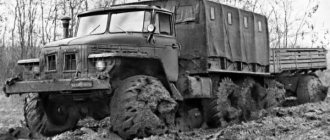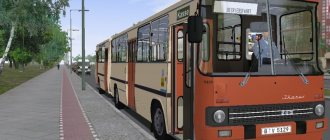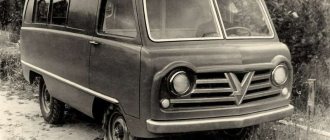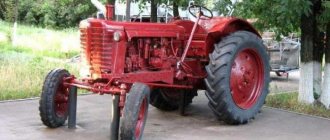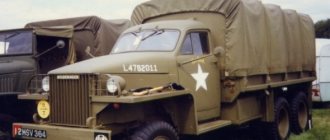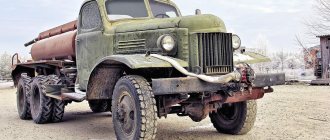It is generally accepted that the fastest aircraft are fighters. However, in the 70s, a heavy missile carrier was built in the Soviet Union, and no fighter in the world could compete with its speed. It was a T-4, which was designed at the Design Bureau named after. P. Sukhoi.
The history of the creation of the T-4 aircraft
In the early 60s, the USSR achieved strategic parity with its main rival in the global confrontation - the United States of America. This happened thanks to the accelerated development of bomber aircraft and nuclear missile systems. Both sides did not stop there and continued the arms race.
The United States has improved its strategic arsenals and achieved serious success in this. Prototypes of the XB-7 Valkirie strategic bomber and SR-71 Blackbird reconnaissance aircraft took to the skies. The Pentagon began creating the B-1 strategic bomber, potentially the most advanced air strike system. One after another, nuclear submarines and powerful floating airfield aircraft carriers were added to the American Navy. The USSR could not ignore such a threat.
In 1963, the Soviet military set the task of creating a strategic aviation strike and reconnaissance complex that could find and destroy any targets at ranges of up to 7 thousand kilometers using guided missiles. The priority among them was the aircraft carrier groups of the potential enemy. A competition was announced among design bureaus. The design bureaus of Pavel Sukhoi, Andrei Tupolev and Alexander Yakovlev presented their projects. The winner was the T-4 model proposed by Sukhoi.
This was an unexpected decision, because the Sukhoi Design Bureau specialized in light front-line fighters and interceptors, and here is a strategic missile carrier weighing 100 tons. The main trump card of the T-4 was the highest cruising flight speed - 3200 km/h (three speeds of sound). This promised complete invulnerability of the vehicle when breaking through enemy air defenses.
The patriarch of Soviet bomber aviation, Andrei Tupolev, strongly objected to the transfer of the project to Pavel Sukhoi. Unofficially, the T-4 aircraft was called “weaving” because of the take-off weight of the machine. The development of the project was headed by Naum Chernyakov. He already had experience working on strategic intercontinental systems. In the 50s, he was the chief designer of the supersonic unmanned two-stage cruise missile "Storm". She could fly over distances of several thousand kilometers at a speed of 3500 km/h.
When creating "Storm", titanium was widely used for the first time - a lightweight metal that can withstand extreme temperatures. It has become indispensable in conditions of prolonged flight at supersonic speeds. The project was closed in 1960, but many developments on the “Bure” (heat-resistant materials, technologies for their processing) were used in the construction of the T-4.
T-4 design
Almost everything in the design of this machine was new and unknown. Therefore, work on the aircraft made it possible to raise many branches of science and technology to new heights. T-4 became a kind of technical university through which the participants in its creation passed. In general, during the creation of the T-4, 600 inventions were introduced. Not a single aircraft built by that time in the USSR had such a large number of original designs.
Together with the Sukhoi Design Bureau, scientists from the Central Aerohydrodynamic Institute actively worked on the development of the Sotka. They took part in the development of the aerodynamic design and a unique control system. The designers chose a canard layout, which included the front horizontal tail. To reduce drag, they decided to make the bow part movable. During takeoff and landing, the pilot would tilt it down and close it during flight, piloting the plane using instruments only. This was an extremely risky decision. However, it promised a big increase in speed.
They decided to make the body of the car mixed - from titanium and steel. The original aircraft required no less original engines that were capable of performing normal work in the most severe temperature conditions and rarefied air. Such power plants were made in Rybinsk. The air intakes and four engines were installed under the Sotka fuselage in one package. Wits immediately nicknamed this scheme a “communal bed.” For the first time in domestic practice, an ultra-reliable electric-remote control system with quadruple redundancy was used on an aircraft.
History of the model
The T-4 “weaving” aircraft, which is how the supersonic model of military aircraft was named, could easily outpace sound, and by a factor of 3. In classified documentation, given the decent weight characteristics, the equipment was called “Product 100” or “Sotka”.
By decision of the current government of the USSR, the T-4 Sotka bomber was not presented to the world community, that is, the new model was simply hidden from prying eyes. The development and assembly of air transport was carried out at Zhukovsky, but the project was given a special secrecy status.
This secrecy is primarily explained by the fact that the production of the new model involved technologies that were innovative by those standards. Currently, the only copy of the aircraft is on display at the Air Force Museum, operating in the Moscow region (Monino district).
Looking at a photo of the Tu-144 airliner or seeing it in reality, it is easy to notice the similarity of this aircraft with a bomber, both in terms of design parameters and external configuration. By the way, the chronology of these models turned out to be very similar, both the civilian airliner and the military aircraft were discontinued and decommissioned quite quickly:
- passenger transport was put out of action after 2 terrible plane crashes that occurred at the beginning of 1973 and at the end of 1978;
- It was decided to discontinue the "weaving" and send it for melting down at the beginning of 1974, after the bomber completed only 10 test flights.
The aircraft models in question did not go into production, despite the fact that incredible amounts of money were spent on their development, due to technical shortcomings that, unfortunately, were made by Soviet design engineers.
The assembled military equipment had to not only cope with the enemy in the sky, but also destroy enemy sea vessels, as well as reconnoiter the area and launch missile strikes on ground targets.
Flight tests of the T-4 aircraft
08/22/1972. Test pilot Vladimir Ilyushin, together with navigator N. Alferov, took seats in the cockpit of the first prototype of the T-4. Designers, engineers, scientists, and representatives of the air force gathered at the airfield of the Gromov Flight Research Institute in the city of Zhukovsky. The car took off easily and quickly gained altitude. The Sotka turned out to be easy to pilot and had good stability and controllability.
The first forty-minute flight was successful and without any comments. “This is an airplane of the twenty-first century,” said Vladimir Ilyushin after a soft landing. According to the flight test plan of the first stage, nine flights of T-4 missile carriers took place. Their results literally brought customers from the Ministry of Defense into a state of euphoria. A kilometer per second is a speed that any enemy’s anti-aircraft weapons cannot cope with today, in the twenty-first century.
The hundred-ton car was controlled as easily as a regular fighter. The obtained flight characteristics completely coincided with the calculated ones. The Commander-in-Chief of the USSR Air Force, Chief Marshal of Aviation Pavel Kutakhov assessed Sukhoi’s plane this way: “This is a real Russian miracle.”
Based on the results of the first stage of testing, the military ordered 250 vehicles to the industry. They were to be built at a plant in Kazan, the main production base of the Tupolev Design Bureau. But in 1974, at the direction of the Ministry of Aviation Industry, work on the T-4 aircraft was suspended. General Designer Pavel Sukhoi tried to find out the reasons for such a decision from Defense Minister Marshal Grechko.
09/15/1975. The general designer died without receiving a clear answer. The topic was officially closed by a resolution of the Council of Ministers of the USSR dated December 19, 1975. It indicated the following reason for the termination of work on the "hundredth" - "in order to concentrate forces and funds on the creation of the Tu-160 as the main strategic multi-purpose aircraft."
Russian Aviation
In the early 60s of the last century, the Pavel Sukhoi Design Bureau began designing a unique aircraft under the secret code “100”. Six years later, the “hundredth”, as the developers called it, was prepared for flight tests. It was a truly fantastic machine: speed of 3200 km/h, flight altitude of 17 thousand meters, weapons - hypersonic cruise missiles with nuclear warheads...
Work on the T-4 (“product 100”) began at the Sukhoi Design Bureau in 1961. The military was tasked with creating a new aviation complex designed for “reconnaissance, search and destruction of small, moving and stationary sea and land targets” with a flight range of 7 thousand km. In the USSR, a competition was announced among aviation design bureaus, and the project presented by the Sukhoi Design Bureau emerged as the winner, ahead of the developments of the Yakovlev and Tupolev Design Bureaus.
The highlight of the T-4 was its provision of high cruising flight speed - 3200 km/h, which, according to experts, promised a significant reduction in vulnerability from air defense systems. The creation of the aircraft was ordered by government decree of December 3, 1963. The development of the project was headed by Deputy General Designer Naum Chernyakov.
Detailed design was carried out jointly with the Burevestnik design bureau; in November 1964, the Tushinsky Machine-Building Plant was involved in the production of a pilot batch of aircraft.
The preliminary design of the T-4 was defended in June 1964, and the Air Force mock-up commission was held in February 1966. The model commission, appointed by order of the Commander-in-Chief of the Air Force, was presented for consideration with the T-4 aircraft in two versions - attack and reconnaissance.
The commission assessed the work done positively, noting that the creation of the T-4 aircraft is the most important national task to equip the country's Air Force with qualitatively new and effective strike and reconnaissance assets.
The final aerodynamic configuration of the aircraft, which received approval from the commission, had the following features:
- was developed using an aerodynamic canard design;
- the bearing surface of the aircraft consisted of an influx, smoothly turning into the center section, the center section and wing consoles with a straight trailing edge mechanized along the entire span;
- the thin fuselage of large aspect ratio and round cross-section was equipped with an all-moving front horizontal tail surface, with a straight axis of rotation, located high relative to the fuselage;
- single-fin, with a rudder with a small fork, vertical tail;
- rotating nose of the fuselage;
- a garrot located on the upper surface of the fuselage;
- the engines were installed according to the “package” scheme in a single engine nacelle with a central air intake with vertical braking surfaces, with a vertical wedge dividing the air intake into two halves, each of which serves two engines;
- the front landing gear was retracted into the vertical wedge of the central air intake, the main landing gear supports were retracted into niches located in the engine nacelle between the air ducts and its outer side;
- the aircraft's armament was mounted on two open hardpoints located parallel under the engine nacelle.
To achieve the specified requirements, it was necessary to ensure a high aerodynamic quality at cruising supersonic speed of Mach 3. Sukhoi Design Bureau together with TsAGI conducted a complex of fundamental studies of the aerodynamic characteristics of aircraft models and selected the necessary layout. The wing is a “double delta” in plan, with a sharp leading edge and deformation of the middle surface.
A large amount of research was needed to refine the layout of the power plant. As a result, the option with a lower location of air intakes and a “package” arrangement of four engines was chosen. For the first time in domestic practice, a supersonic adjustable air intake was used for a design Mach number of 3.0. Especially for the T-4, the design bureau of Peter Alekseevich Kolesov developed the RD36-41 turbojet engine, which ensures long-term flight at Mach 3 speeds.
The most important problem was the creation of a design and selection of materials that could ensure operation at high operating temperatures - 220-3300C. The main structural materials of the airframe were titanium and steel; the main efforts of the OKB designers and technologists during the creation of the T-4 were devoted to developing the technology for their use in the aircraft design.
New high-strength materials at that time were used in the airframe design:
- titanium alloys VT-20, VT-22, VT-21L;
- stainless steels VIS-2 and VIS-5;
- structural steel VKS-210.
It was necessary to master a large number of fundamentally new technological processes, such as automatic through-penetration welding, automatic submerged arc welding using a sheet attachment, chemical milling of titanium alloys, etc.
The surface of the aircraft airframe consisted of 69% of panels welded from sheet metal by spot electric welding, 21.6% of panels welded from sheet metal by through penetration, and 9.4% of milled panel slabs.
To test new technologies, an extensive program was carried out to develop new types of materials and coatings and test full-scale structural samples. To test the power plant, aircraft systems and equipment, the OKB, together with its subcontractors, carried out a large program of research and testing of various models, stands and flying laboratories. So, for example, to test the shape of the wing, the LL “100L” was built and tested together with LII on the basis of the Su-9.
The target equipment of the aircraft included the NK-4 navigation complex and the Ocean radio-electronic complex, including the Vikhr weapons control system, the Rapir reconnaissance system, the Otpor defense system and the Stremnina radio communications equipment system.
The main armament of the aircraft consisted of three aeroballistic hypersonic missiles X-45, the development of which was carried out at the Raduga design bureau. The X-45 missile had an estimated launch range of 550-600 km and a cruising flight speed of Mach 5-7.
As part of the work on the T-4 topic, almost all the main components, systems and assemblies on the aircraft were developed at the level of inventions. In total, the OKB designers introduced 208 inventions, and taking into account the inventions incorporated in the development of component units and products - about 600. Not a single aircraft built by that time in the USSR had such a large number of original developments!
In 1971, together with the Tushinsky Machine-Building Plant, the construction of the first prototype “101” aircraft was completed and on December 30 it was transported from the assembly shop of the Sukhoi Design Bureau to the flight test base.
For four months, finishing work was carried out on the aircraft, as well as debugging and testing of systems, paired and general engine starts were carried out.
On April 20, 1972, the aircraft was accepted by the crew for flight testing. During the 101 tests, eight taxiings were performed, four of which were high-speed, accelerating to a speed of 260-290 km/h and with the nose wheel lifting off. High-speed taxiing was performed using remote control systems, with dampers turned on, with the inner pair of engines operating at maximum afterburning mode, and the outer pair at maximum afterburning mode. At the end of the high-speed taxiing section, the engines were throttled to low throttle, the braking parachute was released and the aircraft was braked.
The results of the experiments confirmed that the remote control system has better characteristics and is more preferable for the pilot. Taking into account the reliability of its operation thanks to four-fold redundancy, a decision was made: to carry out the first flight while controlling the aircraft via a remote system.
T-4 "Sotka" on its first flight
The first flight of the experimental aircraft took place on August 22, 1972, the crew consisted of pilot Vladimir Ilyushin and navigator Nikolai Alferov.
The flight took place with an aircraft take-off weight of 77,300 kg. The landing gear did not retract in the air. During takeoff, the internal engines operated at maximum afterburner, and the external engines operated at maximum afterburner. In flight at an altitude of 3000 m, a qualitative assessment was made of the stability and controllability of the aircraft and the operation of the power plant. A simulated landing was performed while flying over the runway. As planned, the flight was provided by remote control. Braking of the aircraft during the run was performed by the main braking system and a braking parachute. The duration of the first flight is 40 minutes. The fuel weight was 20,000 kg.
After the first flight, tests of “product 101” were suspended to replace the main landing gear with modified bogies with a modified mechanism for turning the landing gear when retracting the landing gear.
Before the second flight, which took place on January 4, 1973, the plane was taxied at high speed. The landing gear was not retracted in flight. In horizontal flight at an altitude of 3000 m at a speed of 500-550 km/h, roll and pitch tests, rudder and pitch elevon impulses were performed, the operation of the engines and the automatic traction control system was checked. The maximum flight altitude was 5000 meters, the duration was 41 minutes, the maximum indicated speed did not exceed 630 km/h. While descending, a periscope was released to check the visibility through it. The landing was made with fuel remaining no more than 4000 kg.
The plane “101” took off for the third time on February 14, 1973. During the flight, an attempt was made to retract the landing gear. However, only the front and right main landing gear went inside - the left main landing gear remained outside. The landing gear release went well.
According to the flight test plan of the first stage, 10 flights of the 101 aircraft were planned, of which nine were actually carried out. The first 5 flights were carried out with the landing gear not retracted. On the fifth flight, the take-off weight was already 101,700 kg. In the ninth, which took place on July 6, 1973, the stability and controllability of the aircraft was assessed during acceleration with a climb from 10,000 m to 12,000 m, an increase in speed from the Mach number from 0.9 to 1.3, and subsequent braking.
Flight tests of the first stage were successful. The Report on the factory flight tests of the T-4 aircraft (), signed by the deputy chief designer, leading test pilot V. Ilyushin, states that “the aircraft is simple and well controlled when taxiing, is stable on takeoff and has no tendency to spontaneously yaw or lifting the nose. Very good visibility with the head of the fuselage down greatly facilitates taxiing, takeoff and landing of the aircraft. The take-off angle is maintained simply, and the aircraft takes off smoothly. After lifting the nose of the fuselage, the flight takes place using instruments. The periscope installed on the aircraft gives a good view forward. Climbing is simple and does not require special attention from the pilot. In horizontal flight the plane is controlled well. The acceleration and passage of the speed of sound is calm, the moment of passage M=1 is noted only by instruments. The specified mode is easily maintained by the elevons and the front horizontal tail. The acceleration rate of the aircraft is quite good. Approach and landing are simple. The presence of automatic thrust control completely relieves the pilot from working with the engines during the landing approach. The plane touches the ground smoothly, without a tendency to “goat” or spontaneously lower the nose; during the run, the plane is stable and well controlled. The braking parachutes and braking system and wheel system are effective.”
In addition, it should be noted that according to the results of flight tests of the “101” aircraft, the obtained flight characteristics coincided with the calculated ones. The airframe units, made of titanium alloys and steel in 1968, did not have any damage to strength or tightness at any of the weld points during five years of operation.
In the period from 1966 to 1974, four T-4 airframes were assembled at the Tushinsky Machine-Building Plant: one for static (ed. “100C”) and three for flight tests (ed. “101”, “102” and “103”). In the reserve, a number of units were manufactured for 3 more vehicles.
The military was pleased and ordered Sukhoi a batch of 250 vehicles, which were planned to be built in the coming five-year period. But in 1974, at the direction of the USSR Ministry of Aviation Industry, work on the T-4 topic was suspended. Officially, the work was closed in accordance with the Decree of the USSR Government of December 19, 1975 on the closure of the “product 100” project in order to concentrate forces and funds on the development of the Tu-160.
Product 200 mockup of the T-4MS aircraft
After this, the Sukhoi Design Bureau presented an estimate for the costs of the T-4, which amounted to a fantastic sum of 1.3 billion rubles at that time. On the basis of the T-4, in 1968-70, the OKB created a project for the modernized T-4M missile carrier with a variable-sweep wing, and in 1970-72, the T-4MS project (ed. “200”). In 1972, the Air Force competition commission reviewed the submitted projects for a strategic dual-mode strike aircraft presented by the Sukhoi Design Bureau (“product 200”) and the Myasishchev Design Bureau (M-18). A non-competition project from the Tupolev Design Bureau was also considered.
However, later the developers of the Tupolev Design Bureau independently began to continue work on shaping the appearance of a new attack aircraft with variable wing geometry, which ultimately led to the creation of the Tu-160 bomber.
There was a project for a passenger version of the T-4, competitive with the implemented Tu-144. The modified "weaving" was also considered as a booster aircraft for the Spiral aerospace system.
The only surviving copy of the T-4 aircraft is in the Central Museum of the Russian Air Force in Monino.
Based on materials:
- UAC magazine "Horizons" No. 1 2014
- Aviation encyclopedia "Corner of the Sky"
- Wikipedia
- 03/30/2016 25 most outstanding aircraft in the history of domestic aviation
- 03/14/2016 Su-30SM multirole fighter
- 01/22/2016 The department of the chief designer of the aircraft plant in Komsomolsk-on-Amur celebrated its 80th anniversary
- 01/28/2021 MAI is working on an innovative model of gas dynamics for hypersound
( 8 ratings, average: 4.50 out of 5)
hypersonichypersonic missileX-45 missilesukhoi sotka aircraftSukhoiT-4T-4MSTu-160
T-4 modifications
On the basis of the T-4, two more projects were created in the early 70s: the modernized missile carrier T-4M, which has a variable sweep wing, and the T-4MS, the so-called “two hundred” - a strategic dual-mode strike aircraft. The first flight prototype of the T-4 is permanently parked at the Central Air Force Museum in the village of Monino, Moscow Region.
The efforts spent on building the T-4 aircraft were not in vain. Many technical ideas and achievements that were embodied in it were later used in the designs of many attack aircraft of the following generations. After the cessation of work on the T-4, P. Sukhoi's design bureau focused on creating fighters and front-line attack aircraft.
Consequences
The T-4 bomber remained unknown until post-Soviet times. And then “weaving” began to acquire “urban legends”. The aircraft began to be proclaimed superior in quality not only to the Tu-22, but also to the Tu-160. They stated that the bomber “was also effective as a reconnaissance aircraft,” although the reconnaissance modification did not even have time to be manufactured. The T-4 was declared to be “essentially multi-mode,” without indicating the source of such information. At the same time, they preferred not to remember the narrow specialization of the “weaving” and the modest combat load of the aircraft.
And after the myth was created about the ruined miracle aircraft, which could have provided the Soviet Air Force with an advantage for decades to come, they began to look for those responsible. And this is how they decided to consider Andrei Tupolev. Allegedly, it was he, foreseeing the loss of the Kazan plant where the Tu-22 was produced, and the Air Force’s refusal of its bombers, who through intrigue achieved the closure of the project.
How things turned out in reality is unlikely to become known. Probably, the T-4 was indeed considered too expensive and highly specialized. But the attempt to get a multi-mode strategic bomber from Sotka did not justify itself, losing in the competition to both Myasishchev’s M-18 and Tu-160.
Only the plane with tail number “101”, located in Monino, has survived to this day.
Of course, the designers’ work was not completely wasted - for example, the fly-by-wire control system was tested on the T-4.
But the plane never became an “aircraft carrier killer.” And it’s even difficult to say how long it would have lasted in operation if production had begun. And in the USA, tests of the XB-70 bomber were stopped back in 1969 - the project was considered unpromising.
T-4 aircraft characteristics:
| Modification | T-4 |
| Wingspan, m | 22.0 |
| Length, m | 44.0 |
| Height, m | 11.2 |
| Wing area, m2 | 295.7 |
| Weight, kg | |
| empty plane | 55600 |
| normal take-off, kg | 114000 |
| maximum take-off, kg | 135000 |
| engine's type | 4 TRD RD36-41 |
| Thrust, kgf | 4 x 16000 |
| Maximum speed, km/h | 3200 |
| Cruising speed, km/h | 3000 |
| Flight range, km | 7000 |
| Run, m | 950-1050 |
| Mileage, m | 800-900 |
| Practical ceiling, m | 18000 |
| Crew, people | 2 |
| Weapons: | 2 strategic air-to-surface missiles |
Sukhoi T-4 aircraft. Gallery.
Combat aircraft
Standardization
The German T-4 E tank was the first large-scale series to be produced during the war. Although many studies and reports point to the lack of penetration of the Panzer III's 37mm gun, replacing it was not possible. Looking for a solution to conduct testing on one prototype Panzer IV Ausf. D, a modification of the Pak 38 medium-velocity 50 mm cannon was installed. The initial order for 80 units was canceled after the end of the French campaign. In tank battles, in particular against the British Matilda and the French B1 bis, it finally became clear that the thickness of the armor was insufficient and the penetrating power of the gun was weak. In Ausf. E retained the short-barreled KwK 37L/24 gun, but the thickness of the front armor was increased to 50 mm, with 30 mm steel plate overlays as a temporary measure. By April 1941, when this modification was replaced by Ausf. F, its production reached 280 units.
Bomber "Game of Thrones"
The history of this car is full of scandals, intrigues and even conspiracies.
According to one version, it was with a conspiracy that the whole project began. In 1960, the USSR government made a fateful decision to curtail work on conventional aviation in favor of missiles. To this day, historians debate its benefits or harms, but the appearance of the future T-4 simply would not have happened otherwise. All work on intercontinental bombers was closed, only one project went through “genocide” - Tupolev’s “135”.
It was a supersonic strategic missile carrier, whose mission was to fight US aircraft carriers in relatively remote waters such as the Indian Ocean and the Mediterranean Sea. He could also engage in reconnaissance and strikes against ground targets in Europe. Additional fuel tanks made it possible to reach intercontinental ranges.
One of the variants of the strategic supersonic missile-carrying bomber "135"
As one legend says, Khrushchev would have been happy to close “135”, but Tupolev had too much weight in industry and the military. Then a cunning plan was born - to hold a competition for a missile carrier, doing everything so that Tupolev would lose. The “fighter” design bureaus (design bureaus) of Sukhoi and Yakovlev were chosen as opponents, because if one of them had won, the project could have easily been closed, citing lack of experience.
There is also a less conspiracy theory: at that time it was not possible to solve the problem of fighting aircraft carriers with missiles alone, and after the defeat of Myasishchev’s design bureau, Tupolev remained a monopolist in this industry - that’s why fighter designers were brought in.
Strategic supersonic bomber-missile carrier Yak-35. Reconstruction by A. Zhirnov
Be that as it may, by 1962 all three design bureaus had prepared their projects. The characteristics of the Sukhoi and Yakovlev aircraft were similar to each other. A range of four thousand kilometers with a combat load, a take-off weight of about 110 tons, a maximum speed of three thousand kilometers per hour - all according to the customer’s requirements. The difference was in the placement of the engines and the shape of the wing.
A variant of the T-4/100 strategic supersonic missile-carrying bomber, introduced in 1962. Reconstruction by A. Zhirnov
The Tupolev car was seriously different from its competitors: the speed was lower, only 2500 kilometers per hour. This was explained by the fact that the bomber was not made of steel and titanium, like other projects, but mainly of aluminum. This reduced the permissible maximum speed, but simplified and made the project cheaper: building aircraft from steel and titanium was very difficult and unimaginably expensive. Tupolev believed that the difference in speed of 500 kilometers per hour in this case was insignificant. In addition, the “135” weighed about 190 tons - solely out of a desire to save money. Due to its weight, the bomber had a fuel supply for intercontinental flights, which means it was more versatile than its competitors.
Final appearance of the T-4 missile-carrying bomber
Attachments
Front-type attachments are installed on the T-4 tractor using special plates fixed on special sections of the frames. The plates are welded on the outside and are intended for installation of bulldozer blades, buckets and other attachments.
The rear linkage involves mounting attachments using a three-point and two-point scheme. The type of hydraulic system is separate-aggregate. The PTO on the device is of a dependent type with power take-off from the gearbox reversible gearbox. Thanks to the wide range of mounting options, the list of guns that the T-4 can work with is huge.
The main list of attachments for equipment of this type and traction class is:
- four-furrow plow;
- disc harrow;
- bulldozer blade;
- snow plow;
- seeders of any type;
- cultivation cutter;
- snowfall;
- cleaning/utility brush;
- mounted crane;
- hay forks;
- fertilizer spreaders;
- potato diggers, screening/vibrating;
- Industrial potato planters.
When choosing attachments, you can pay attention not only to attachments produced by the Altai Tractor Plant, but also to equipment for tracked tractors from other manufacturers (traction class four, industrial and semi-professional use).
For example, you can use a large number of attachments from KhTZ and MTZ tractors (KhTZ-201, MTZ 2022, MTZ-2103, Belarus 2022).
Basic malfunctions and their elimination
The main malfunctions of the T-4 tractor and methods for eliminating them are shown in Table 1.
Table 1.
| Type of malfunction | Remedy |
| 1. Noisy, difficult gear shifting | Adjusting the clutch brake, adjusting the locking rod |
| 2. Reduced or zero oil pressure | Refilling with oil |
| 3. The tractor control mechanism is broken (impaired brake operation) | Adjusting the gap between the brake band and the drum |
| 4. The rear axle is noisy | Adjusting the tension of tapered bearings |
| 5. Attachment does not raise or lower | Replacing the pump mechanism retaining spring |
| 6. Battery drains quickly | Cleaning the battery surface |


